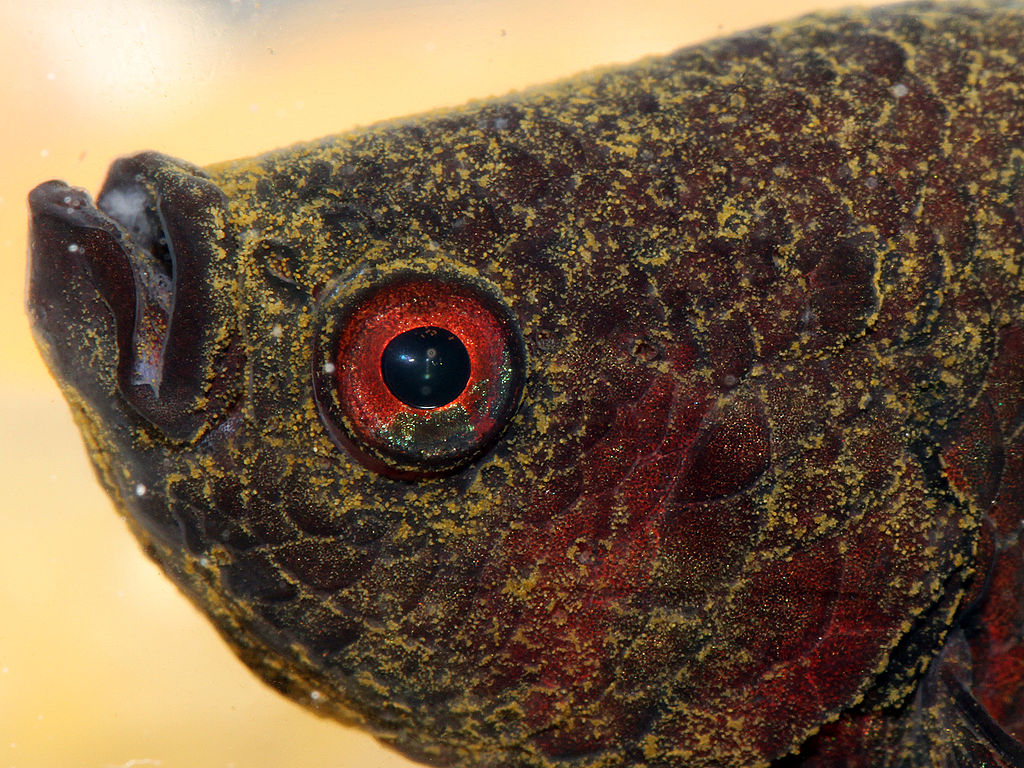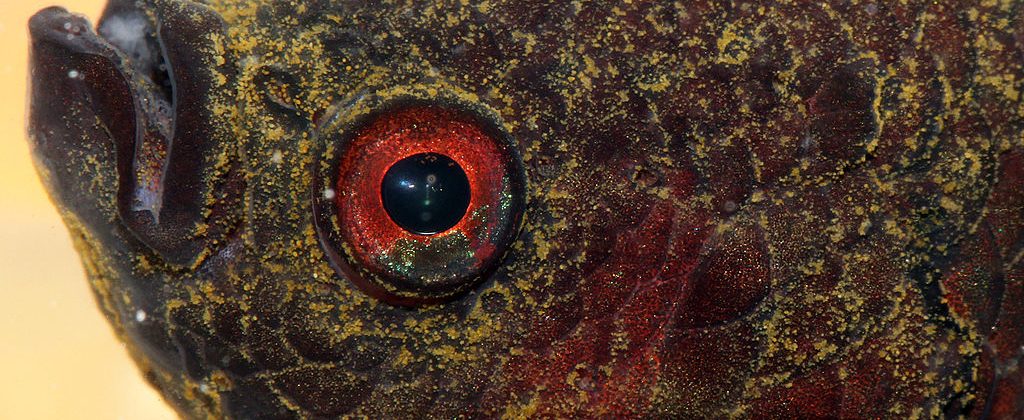There are 2 types of Velvet disease which occur in both freshwater and saltwater aquariums, but the parasite itself and treatment of the disease is different. For this page we will focus specifically on freshwater velvet disease, so let’s find out more…
Velvet Description
The scientific name for the parasite that causes this disease is Oodinium Limneticum. It is a single celled organism that is very similar to Ick in more ways than one. It is because of these similarities that we need to know how to spot minute differences between them.
The only time you can see Oodinium Limneticum is when it has found a fish to attach itself to and feed off. It can be seen as tiny spots (0.2mm diameter) on the fish which resemble a powder like coating. The spots caused by Ick are bigger (1mm diameter). It is highly unlikely that you will see just one or two parasites on the fish, but large groups create what looks like a velvet coating.
In the light the coating will have a yellow/gold colour. This leads us to the other common names used, Gold Dust Disease and Rust Disease. Quite often the colour of your fish may be similar to the spots, making it even more difficult to see.
Betta fish, Barbs and Goldfish are particularly vulnerable to the disease, but it will attack all fish. Any fish breeder will tell you that it can be a real killer when trying to raise young fry.
Velvet also has the ability to live in your aquarium in low, unnoticeable levels, for a long time until a breakout eventually occurs.
Velvet Disease Symptoms
If your fish reach the stage where they are nearly completely covered by the parasite, there is a good chance that they will die. It is important to be on the lookout for small changes in behaviour, which might give us an early warning. This saying is true for many of the aquarium fish diseases.
The most common place for Oodinium Limneticum to first attach itself to your fish is in the gills. The damage caused means that the fish start to gasp for air rapidly. Other than that, you may see the fish trying to rub against objects in an attempt to scratch the parasites off.
Fish will also clamp their fins against their bodies and you may find them resting on the substrate as they become lethargic. Their appetite will also decrease dramatically.
Velvet Disease Treatment
Luckily for us, treating Gold Dust Disease is also very similar to Ick and you can even use the same medications. We don’t need to worry about medicating our fish for the wrong disease only to find out too late that we have made a mistake.
Oodinium Limneticum has the same style life cycle as Ick. There are 3 stages to the cycle and we can only kill the disease during one of the stages.
- Feeding Stage: In this stage the parasite is attached to the fish and feeding off it.
- Breeding Stage: The parasite falls off the fish when it is done feeding. Where it lands it will transform and start multiplying. Just 1 parasite can produce nearly 300 offspring!
- Distribution Stage: This is when the newly produced offspring are dispersed and swim around the tank looking for your favourite tropical fish to feed on!
The cycle takes about 4 to 7 days to complete at normal fish tank temperatures. We can only kill the disease during the distribution stage when the parasite is swimming around looking for a host fish. Velvet Disease draws some of its energy from sunlight, so it is recommended to keep your aquarium dark during the treatment period to help the process.
When you are ready to begin treatment, off the shelf medications are the easiest to use and are very effective. Please be sure though, to read the instructions carefully and follow them. Read any warnings that come with them i.e. some medications need to be reduced for certain fish. Be especially careful with fish that don’t have scales, like the Clown Loach. Some popular medications are:
Note: You must know the water volume of your aquarium in order to give the correct dosage. Take into account how much space the substrate and any features take up, they will reduce the volume of your tank.
It is wise to remove the carbon from your aquarium filter during treatment. The carbon will remove the medication from the water, which you do not want at this stage. When the treatment is complete you can add new carbon into your filter which can then remove any excess medication which is no longer needed. This process should take around 2 weeks.
If all goes well you should be rid of your Velvet problem.
Suggestions
If you have more than one tropical fish tank, you may ask how they both pick up diseases at the same time. This often happens with quarantine tanks and breeding tanks and is quite a common mistake.
The answer is in the equipment that you use. These diseases and parasites are very small and attach themselves onto nets, suction pipes and whatever else we use. All we need to do next is go use that same equipment in the next tank, transferring any attached parasites at the same time.
The solution is simple, keep separate instruments for each tank and you will greatly reduce the risk of disease transfer.




Leave a Reply